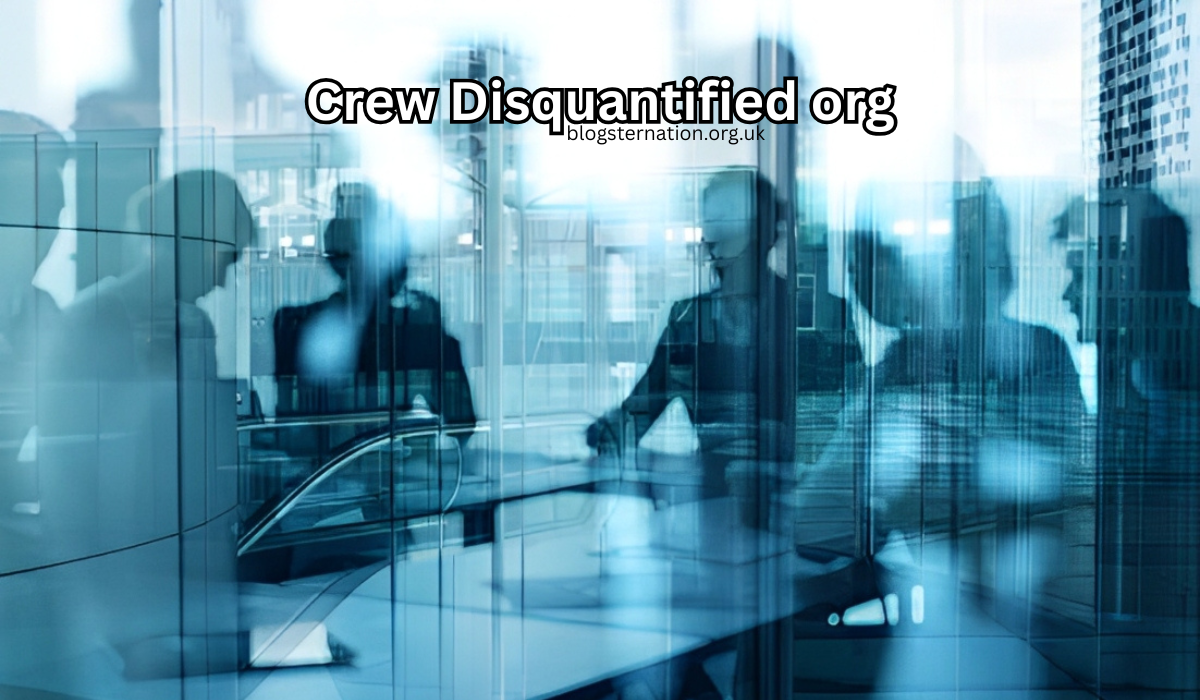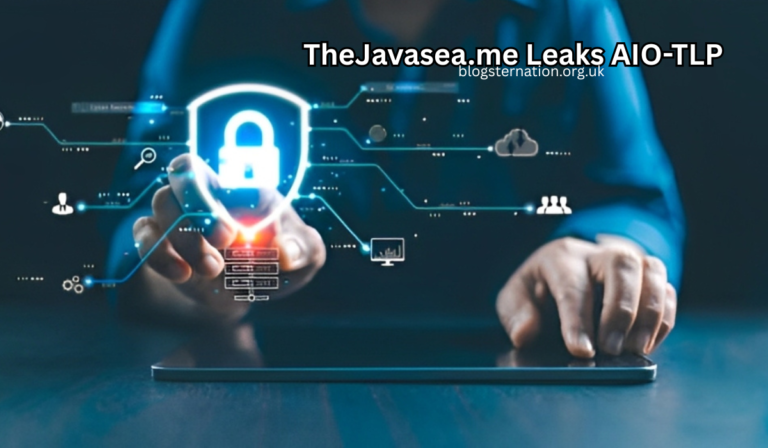Crew Disquantified org Traditional Organizational Management
Discover how the Crew Disquantified Org approach is reshaping traditional organizational structures by prioritizing collaboration, adaptability, and human-centered values. Explore this innovative model for a flexible, efficient workplace.
Introduction
In today’s dynamic business world, traditional organizational structures are being reevaluated and reimagined. As companies strive to remain agile, innovative, and competitive, they are turning to new models that prioritize collaboration, adaptability, and flexibility. One such model is the Crew Disquantified Org (CDO), which seeks to break free from rigid hierarchies and performance metrics that limit creativity and growth. The Crew Disquantified Org is not just a trend but a transformative shift in how businesses approach management and organizational design. This model emphasizes human-centered values, collaboration, and continuous learning, allowing companies to better adapt to changing conditions and foster a culture of innovation. By adopting this approach, organizations can create more resilient, engaged teams and deliver higher value to customers and stakeholders.
The Shift from Traditional Hierarchies to Collaborative Teams
One of the key features of the Crew Disquantified Org model is the shift from traditional hierarchical structures to collaborative, team-based frameworks. In traditional organizations, authority and decision-making are concentrated at the top, with employees at lower levels executing tasks based on directives from higher-ups. However, this approach can often stifle creativity, slow down decision-making, and hinder employee engagement. In contrast, the CDO model encourages a decentralized approach to decision-making, where teams are given the autonomy to make decisions and solve problems collectively. By focusing on collaboration, trust, and shared responsibility, the Crew Disquantified Org model fosters an environment where employees can thrive, contribute their unique skills, and work together to achieve common goals.
In a Crew Disquantified Org, teams are self-organizing units, and the focus is on creating a work environment where individuals can leverage their strengths while learning from one another. This model places a strong emphasis on building trust among team members, which is crucial for fostering an environment of psychological safety. When employees feel trusted and empowered, they are more likely to take initiative, share innovative ideas, and collaborate effectively with colleagues. This approach not only improves the quality of work but also helps to build a strong sense of community and belonging within the organization.

Moving Beyond Traditional Performance Metrics
Traditional performance metrics, such as productivity quotas, revenue targets, and efficiency goals, have long been used to measure employee and organizational success. However, these metrics often fail to capture the full value that individuals bring to an organization. The Crew Disquantified Org model challenges this conventional approach by prioritizing qualitative measures over quantitative ones. In place of rigid performance targets, the focus shifts to factors such as creativity, adaptability, problem-solving, and team dynamics. These intangible qualities are often the driving force behind innovation, employee satisfaction, and overall organizational success.
In a Crew Disquantified Org, performance is evaluated not just by output, but by the value employees bring to the team and the organization as a whole. This model recognizes that creativity and adaptability are essential for growth and success in a rapidly changing business environment. Employees are encouraged to think outside the box, experiment with new ideas, and take calculated risks without the fear of being penalized for failure. By measuring success based on qualitative factors, organizations can better align their goals with the evolving needs of their employees and the market, fostering a culture of continuous improvement and innovation.
Fostering a Culture of Flexibility and Agility
Agility and flexibility are essential components of the Crew Disquantified Org model. In today’s fast-paced business environment, organizations must be able to pivot quickly and adapt to new challenges. Traditional organizational structures, with their rigid hierarchies and fixed roles, often hinder this flexibility. The Crew Disquantified Org model, on the other hand, allows teams to adapt and reconfigure as needed, enabling them to respond to changing conditions with speed and efficiency.
In a Crew Disquantified Org, roles are not fixed; they evolve based on the needs of the organization and the skills of the team members. Employees are encouraged to take on new responsibilities and contribute to different projects, allowing them to gain diverse experiences and develop new skills. This approach not only enhances individual growth but also ensures that teams remain adaptable and able to meet new challenges head-on. By embracing flexibility, the Crew Disquantified Org model empowers organizations to remain competitive and resilient, even in the face of uncertainty.
The Role of Continuous Learning and Development
At the heart of the Crew Disquantified Org model is a commitment to continuous learning and development. In this model, employees are viewed as lifelong learners who are encouraged to acquire new skills, stay up-to-date with industry trends, and expand their knowledge. Traditional organizations often focus on performance and results, with little attention paid to personal development beyond the scope of the current job role. The Crew Disquantified Org takes a different approach, recognizing that the success of the organization depends on the growth and development of its employees.
Employees in a Crew Disquantified Org are provided with ample opportunities to learn and grow, both professionally and personally. This can include formal training programs, mentorship opportunities, cross-functional collaborations, and access to resources that promote continuous learning. By investing in the development of its employees, the organization not only enhances their skills but also fosters a culture of curiosity, creativity, and innovation. Continuous learning is a key driver of success in the Crew Disquantified Org, enabling teams to stay ahead of the curve and adapt to emerging trends and technologies.

Encouraging Innovation Through Autonomy
One of the fundamental principles of the Crew Disquantified Org model is autonomy. In traditional organizational structures, decision-making is often concentrated in the hands of a few senior leaders, with employees expected to follow instructions and execute tasks within predefined parameters. This top-down approach can stifle creativity and limit the potential for innovation. In contrast, the Crew Disquantified Org model encourages teams to take ownership of their work and make decisions collectively.
By granting teams the autonomy to experiment, innovate, and solve problems on their own, the Crew Disquantified Org creates an environment that fosters creativity and out-of-the-box thinking. Employees are empowered to pursue their ideas, test new approaches, and learn from both their successes and failures. This sense of ownership and responsibility motivates individuals to give their best effort and contribute to the organization’s long-term success. Autonomy is not just about giving employees freedom; it’s about trusting them to use their expertise and creativity to drive positive change.
Building Trust and Psychological Safety in Teams
In a Crew Disquantified Org, trust is the foundation of collaboration and success. Without trust, teams are unable to communicate openly, share ideas, or take risks. The Crew Disquantified Org model places a strong emphasis on building trust and psychological safety within teams. This means creating an environment where employees feel comfortable expressing themselves, making mistakes, and providing honest feedback without the fear of judgment or repercussion.
Psychological safety is crucial for fostering innovation, as it allows employees to take risks and explore new ideas without worrying about the consequences of failure. In a Crew Disquantified Org, leaders play a key role in building trust by modeling transparent communication, being receptive to feedback, and showing vulnerability. This approach creates an environment where employees are more likely to collaborate, contribute their ideas, and work together to solve complex problems. Trust and psychological safety are not just nice-to-haves in the Crew Disquantified Org model—they are essential elements for creating high-performing teams and achieving organizational success.
The Importance of Shared Goals and Values
While the Crew Disquantified Org model emphasizes autonomy and flexibility, it also recognizes the importance of shared goals and values. In order for teams to work effectively together, they must be aligned around a common purpose and set of objectives. The Crew Disquantified Org encourages organizations to define their mission, vision, and core values clearly and ensure that these are communicated to all employees.
When teams are united by shared goals and values, they are better able to collaborate, make decisions, and solve problems effectively. Shared values create a sense of cohesion and alignment, even in a decentralized organizational structure. In a Crew Disquantified Org, these values act as guiding principles that help teams navigate challenges, make ethical decisions, and maintain a strong sense of purpose. By focusing on shared goals and values, the Crew Disquantified Org ensures that employees are not just working for the organization’s success but are also personally invested in its mission and vision.
Overcoming Challenges in Implementing the Crew Disquantified Org Model
While the Crew Disquantified Org model offers numerous benefits, implementing this approach can be challenging for organizations that are deeply entrenched in traditional hierarchical structures. Shifting from a top-down, command-and-control model to a decentralized, collaborative one requires a fundamental change in mindset and organizational culture.
Moreover, the Crew Disquntified Org model requires a significant investment in building trust, developing leadership skills, and fostering a culture of collaboration. Leaders must be prepared to support their teams, provide guidance when necessary, and create an environment where employees feel safe to take risks and make mistakes. Additionally, organizations may need to invest in tools and technologies that facilitate communication, collaboration, and knowledge-sharing across teams.
Despite these challenges, many organizations have found success with the Crew Disquntified Org model by gradually transitioning to a more flexible and collaborative structure. By starting with pilot programs or small teams, organizations can test the effectiveness of the model and address any issues that arise before scaling it to the entire organization. With the right leadership, commitment, and resources, the Crew Disquantified Org can transform an organization’s culture and performance.

Conclusion
The Crew Disquntified Org model represents a bold and innovative approach to organizational management. By prioritizing collaboration, adaptability, and continuous learning, this model helps organizations become more flexible, resilient, and capable of thriving in an ever-changing business environment. As companies continue to face new challenges and opportunities, the need for more human-centered, collaborative, and agile organizational structures will only grow. The Crew Disquntified Org offers a promising solution for organizations looking to foster innovation, engage employees, and achieve long-term success in a rapidly evolving world.
The Crew Disquantified Org model is not just a theoretical concept; it is a practical, actionable approach to creating a more dynamic, inclusive, and innovative work environment. As businesses strive to adapt to new realities and improve their operations, the Crew Disqantified Org will likely play a central role in shaping the future of work.
Read also: Online Tool Guide Zardgadjets A Comprehensive Guide







